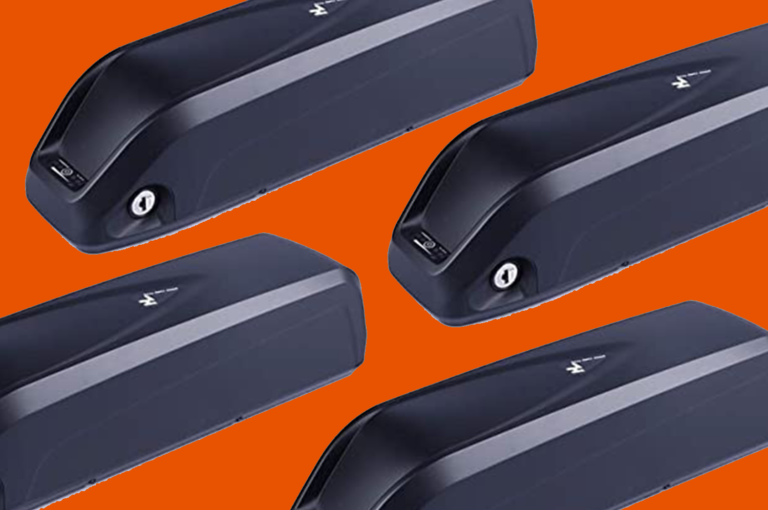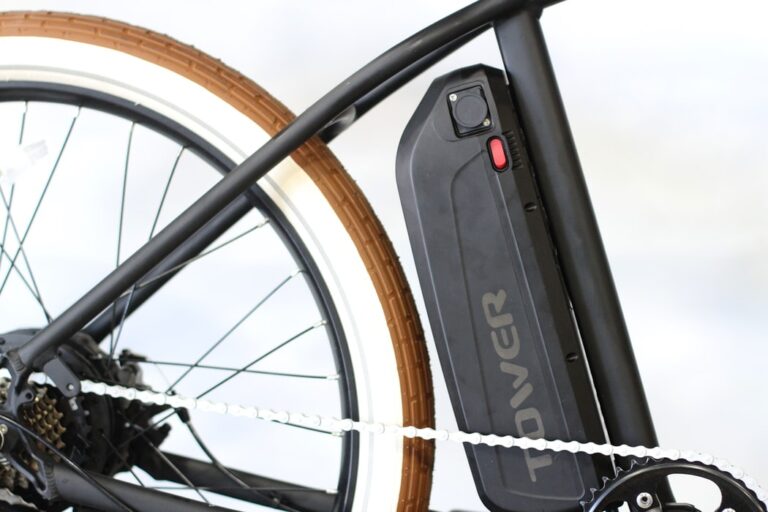Want To Store An e-Bike Outdoors? Here’s Vital Info You Should Know
When the riding season comes to an end, many people consider storing their e-bikes outside during the winter months. If you don’t ride all season long, there are still extra precautions you should take when storing your e-bike outdoors.
After doing 34 hours of offline and online research, I finally found the safest most preferred way of storing an electric bike outside.
To properly store an electric bike outdoors, you must prevent the battery component from becoming too cold by storing it in an ambient temperature environment at 70 °F (20 °C). The e-Bike should be kept in a cool, dry area away from high humidity with a consistent temperature range.
Table of Contents
Preparing Your e-Bike For Long Winter Storage
The first thing I like to do before storing my bike away for the season is giving it a thorough wash. Giving it a thorough cleaning will wash off caked-on mud salt, or other debris or residue it accumulates.
Use a damp cloth to wipe it down thoroughly. Go over it with a dry cloth to soak up any excess moisture left on the frame, chain, or wiring of your e-bike. It is best to store your e-bike in an enclosed environment like a garage, shed, or basement.
If you have to store it directly outside, wrap it was a thermal covering. This will provide a direct barrier between the harsh cold weather and your e-bike’s components. Disconnect your battery from your e-bike and bring it into a climate-controlled area. This will most likely be your residence.
Treat your battery how you would treat your water pipes in your home in terms of temperature. Similar to e-bike batteries, water lines can swell from the cold.
How To Properly Store Your Battery Away
The battery is one of the most critical and costly components of your e-bike. If appropriately maintained, an e-bike battery can last 3 to 5 years.
Never make your battery freeze. When your battery freezes, it can cause the cells inside a battery to swell, rendering it useless.
Another issue if your battery freezes, it can’t decrease the life cycle. Typically you only get so many charge cycles with a standard lithium-ion battery. If you have to buy a new e-bike battery, you could end up spending $300 to $600.
Never charge a lithium-ion battery below freezing, which is below 32 °F (0 °C). Basically, IF IT’S FREEZING OUTSIDE, DO NOT CHARGE YOUR EBIKE BATTERY!
If you want to ride your e-bike during the winter season, one important thing to know: Many e-bike riders store and charge their batteries inside when the temperature is below freezing outside. The issue with charging a battery when it’s too cold
You’ll cause a problem call lithium plating. The battery might look like it is charging, but you’re doing irreversible damage to your e-bike battery.
Once your e-bike suffers this type of damage, it will affect the performance. The only solution will be to buy a new battery for your e-bike.
If you’re going to keep your batteries outside you, want to keep your charge level between 50% and 75%.
And these charging levels are adequate going into the winter months.
After two to three months of storage check, your batteries charge level. Once again, you want to make sure it’s around 50% to 75% charge level. If it’s below 50%, give it a charge to get it back up to that optimal storage level.
Many modern e-bike batteries have charge indicator lights on the body of the battery.
If you have five indicator lights on your battery charge your battery until 3 indicator lights are illuminated, this should put you in that 50% to 75% charge range.
It is also essential not to leave your battery on the charger for prolonged periods. Storing your battery at 100% can reduce the life cycle of your battery.
How To Store Your e-Bike For Frequent Use In The Winter
If you ride your bike all season long, always remember to disconnect your battery and bring it inside during the winter months.
When disconnecting your battery for storage, make sure the contacts on your e-bike and the battery itself are free from residue and debris.
You can use something like WD-40 contact cleaner.
If you choose to use the specific brand of contact cleaner, make sure it’s dry to the touch before reinserting the battery. It’s also a good time to check battery seals on the bike to ensure they are all in good condition.
You wouldn’t want water from slush, snow, or ice to make its way into the electrical components the next time you take your e-bike out during the winter months.
How To Properly Start Your e-Bike After A Prolonged Storage Period
There are a few things to consider before putting your battery in and riding your e-bike after it’s sat for a long winter. After the long dry winter months, your bike’s oils will become dried up.
Make sure to oil your chain using a good quality bike chain oil. Take your bike for a red light ride around the block, testing the battery gears and other components.
It’s good practice to make sure your bike is in working order before you take it into a more challenging environment bike off-roading.
Storing And Securing Your e-Bike From Theft
If you’re not accessing your e-bike all the time, it’s a good idea to think about properly securing it, whether It’s left in a shed, garage, or outdoors.
E-bikes are a significant investment, and taking every precaution to protect it will serve you well.
Securing your e-bike is simply achieved by using the same lock you would use when going for a ride. If you store your e-bike in the garage, secure it to something in your garage that is solid and cannot be moved.
If there’s nothing to secure ti, then try locking your bike to itself, you can even remove a tire and lock the frame and tire together.
Anything to make the bike secure enough that a thief would take one look and wouldn’t want to go through the hassle of trying to steal your e-bike.
Vital Information About Your e-Bike
There’s a lot of useful general information online, but each brand or e-bike has its own unique specific requirements.
Always refer to the user manual first when it comes to important maintenance information related to your specific brand of bike.
Only use manufacturer recommended components with your e-bike or battery.



